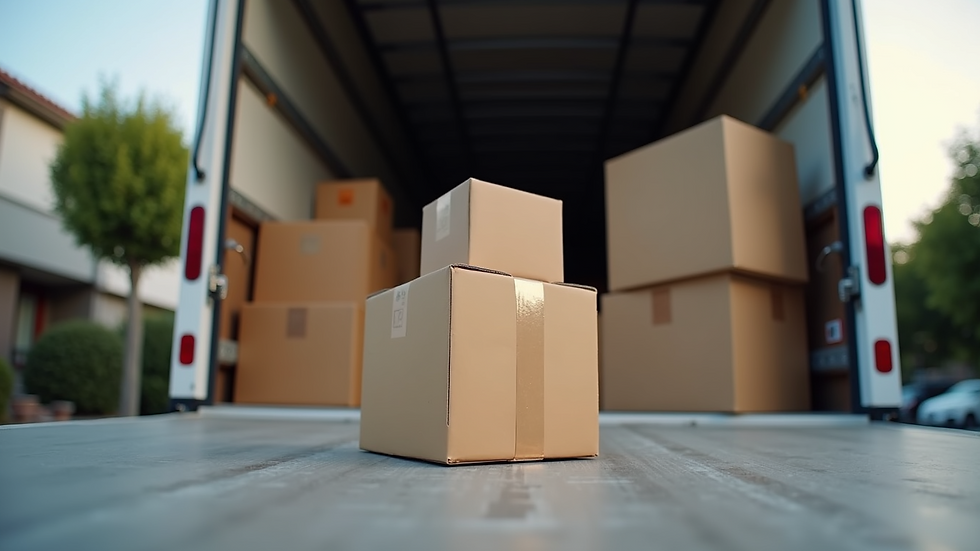How to Simplify Your Home Transition with Smart Planning
- mackeile42
- Sep 8
- 4 min read
Moving to a new home can be an exciting yet overwhelming experience. The process involves many steps, from packing and organizing to coordinating logistics and settling into your new space. However, with smart planning, you can simplify your home transition and reduce stress significantly. This guide will walk you through practical strategies to make your move smoother and more efficient.
Start Early and Create a Detailed Moving Plan
One of the most effective ways to simplify your home transition is to start planning well in advance. Waiting until the last minute often leads to chaos and missed details. Begin by creating a comprehensive moving plan that outlines every task you need to complete.
Set a timeline: Break down your move into weekly goals. For example, start packing non-essential items a month before the move and gradually work towards essentials.
Inventory your belongings: Make a list of all your possessions. This helps you decide what to keep, donate, or discard.
Gather packing supplies: Collect boxes, tape, bubble wrap, and markers early to avoid last-minute runs to the store.
Schedule utilities and services: Arrange for utilities like electricity, water, and internet to be disconnected at your old home and connected at your new one on moving day.
By organizing your tasks and setting deadlines, you can avoid the stress of last-minute scrambling and ensure nothing important is overlooked.

Organize and Declutter Before Packing
Packing is often the most time-consuming part of moving. To make it easier, focus on decluttering your home before you start packing. This step not only reduces the volume of items to move but also helps you start fresh in your new space.
Sort items into categories: Use the "keep," "donate," "sell," and "trash" method to sort your belongings.
Host a garage sale or use online marketplaces: Selling unwanted items can help offset moving costs.
Donate to local charities: Many organizations accept gently used clothing, furniture, and household goods.
Properly dispose of hazardous materials: Items like paint, batteries, and chemicals should be discarded according to local regulations.
Decluttering saves time and money by reducing the number of boxes and the effort required to move. It also makes unpacking easier since you only bring what you truly need.

Pack Smartly and Label Everything Clearly
Efficient packing is key to a smooth home transition. Use smart packing techniques to protect your belongings and make unpacking straightforward.
Use uniform boxes: Standard-sized boxes stack better and are easier to carry.
Pack room by room: Keep items from the same room together to simplify unpacking.
Label boxes clearly: Write the contents and destination room on each box. Use color-coded labels or markers for quick identification.
Protect fragile items: Wrap breakables in bubble wrap or packing paper and use padding inside boxes.
Keep essentials separate: Pack a "first-night" box with items like toiletries, a change of clothes, and basic kitchen supplies.
Taking the time to pack carefully and label boxes will save you hours when you arrive at your new home.

Hire Professional Movers and Consider Moving Services
While DIY moves can save money, hiring professional movers can simplify your home transition significantly. Experienced movers handle heavy lifting, transportation, and sometimes even packing and unpacking.
Research reputable moving companies: Look for reviews, licenses, and insurance coverage.
Get multiple quotes: Compare prices and services to find the best fit for your needs.
Ask about additional services: Some companies offer packing, unpacking, and even moving and junk removal services to help you declutter before or after the move.
Confirm details in writing: Ensure the moving date, costs, and services are clearly documented.
Professional movers reduce physical strain and save time, allowing you to focus on other aspects of your transition.
Prepare Your New Home Before Moving In
To make settling in easier, prepare your new home before moving day. This proactive step helps you avoid delays and discomfort once your belongings arrive.
Clean the new space: A thorough cleaning before moving in makes unpacking more pleasant.
Check utilities and appliances: Confirm that electricity, water, heating, and internet are working.
Plan furniture placement: Measure rooms and decide where large items will go to avoid moving heavy furniture multiple times.
Stock up on essentials: Have basic groceries, cleaning supplies, and toiletries ready for your first days.
By setting up your new home in advance, you create a welcoming environment and reduce the stress of immediate unpacking.
Embrace Flexibility and Take Care of Yourself
Even with the best planning, moving can be unpredictable. Embrace flexibility and be prepared to adapt to unexpected challenges.
Allow extra time: Build buffer periods into your schedule for delays or last-minute tasks.
Ask for help: Don’t hesitate to enlist friends or family for assistance.
Stay hydrated and rested: Moving is physically demanding, so prioritize your health.
Keep important documents handy: Store IDs, contracts, and valuables in a secure, accessible place.
Taking care of yourself during the transition ensures you stay energized and positive throughout the process.
By following these smart planning tips, you can simplify your home transition and make moving a more manageable and even enjoyable experience. Thoughtful preparation, organization, and the right support will help you start your new chapter with confidence and ease.








Comments